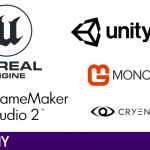[ad_1]
This is an excerpt of the article that was recollected from flipboard, as to generate a clip of interesting news from the topics that i think are important and I want to save for further references and share with my readers. According to a report 80% of steam games will make under 5000 Dollars in the first two weeks after being published.
80% of steam games

Steam’s figures on games earnings are positive but is there more to the story? Source Valve
The problem with game sales reports
Getting information on the actual games sales in any platform has always being very difficult, as most them usually enforce in their publishing agreements, a blackout on any sales information to be published, which is probably good for them because thus way developers don´t actually know how good is the platform perfoming, but which is quite bad for the devs because the lack of information makes taking business decisions very difficult in world where survival is very difficult.
Steam is a useful and well-loved games platform, an easy-to-use portal for casual and committed gamers to find the titles they want and start playing. It’s the largest online PC game seller in the western world. But it has been roughly two years now since Valve shut off the source of Steam Spy’s huge, randomly sampled sales estimates and promised a “more accurate and more useful” replacement to come. We got our first glimpse of what that replacement might entail today, as Valve gave a rare glimpse into its treasure trove of aggregate sales data across thousands of PC games.
But exactly who’s playing what and how much game developers are earning has been hidden for a while, since Valve changed its privacy settings. This happened well over a year ago, and led to Steam Spy, which had been estimating how many people owned which games, being unable to make its calculations.
Now, Valve has released some data in what it describes as a deep dive, and says that steam games earning $10,000 or more in their first two weeks has gone up every year since 2011. The number making that amount in 2019 was three times the figure in 2013, Valve says. It admits that earning prospects for most, but not all, games improved last year. More releases than ever, it says, are finding success.
All well and good, but a new analysis by Ars Technica suggests this is only a partial indication of what’s going on. The new report says that what Valve has said leaves out a huge number of games which are earning less, specifically less than $5,000 in the first two weeks that the games are available.
How performant are steam games?
Ars Technica’s Kyle Orland has taken Valve’s graphs and used photo editing software to convert the graph bars into actual numbers. Even though this process could be slightly inaccurate, Orland says, he believes it’s not by more than a fraction of a per cent.

To get at that data for the charts above, Arstechnica reporters started with the graphs Valve itself provided in its blog post. These lay out the number of games making over $5,000, $10,000, $50,000, $100,000, and $250,000 in their first two weeks, respectively, by release year. They used photo editing software to measure and convert the bars in those graphs into raw numbers, but the actual numbers may be off by a fraction of a percentage point from Valve’s internal benchmarks (No data on how to decipher the graphs for 2005 and 2006, when the total number of Steam releases was too small to draw much meaningful data).
They then compared those numbers to the total number of Steam releases for each year, as collected by Steam Spy (removing non-game software and free-to-play games from consideration, as Valve did in its data). Using that, they were able to figure out the one number that Valve pointedly failed to mention for all of these years: the steam games making less than $5,000 in that two-week launch period.
Since 2015, both the annual growth rate in Steam releases and the proportion of those releases that struggled at launch continued to increase exponentially, before leveling off in 2019. At this point, though, the ratio of Steam releases that can’t hit $5,000 in initial sales has hovered around 80 percent for the last three years.
Read the full article by David Phelan
Or the Original Article from Arstechnica
[ad_2]


![Buildbox Free - How To Make 2D Platformer Game [PART 1]](https://e928cfdc7rs.exactdn.com/info/uploads/sites/3/2020/01/Buildbox-Free-How-To-Make-2D-Platformer-Game-PART-150x150.jpg?strip=all&lossy=1&ssl=1)

